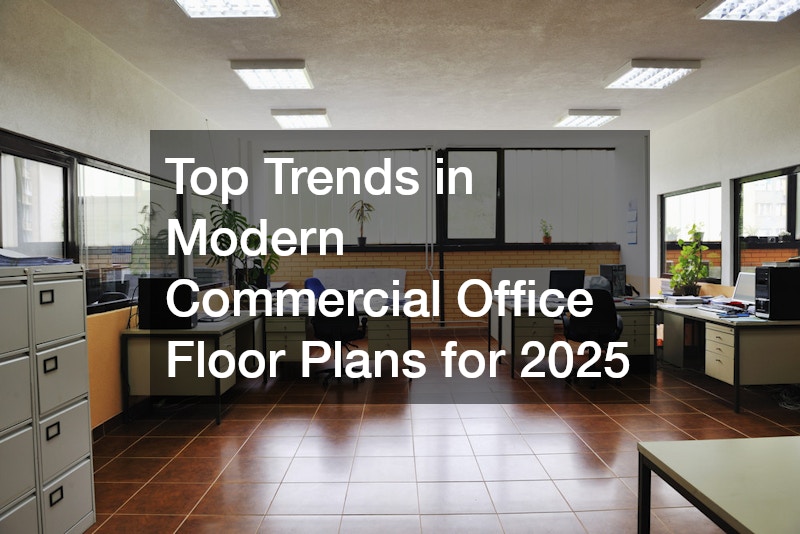The workplace has undergone a remarkable transformation over the past decade. From the rise of open-concept designs to the integration of remote work capabilities, the modern office continues to evolve alongside new technologies, work styles, and employee expectations. At the heart of these changes are commercial office floor plans, which serve as blueprints for productivity, collaboration, and organizational culture.
A well-designed office layout is more than just an arrangement of desks and meeting rooms—it reflects a company’s values, operational priorities, and approach to employee engagement. Over the years, designers have shifted from rigid cubicle structures to dynamic environments that encourage collaboration, creativity, and comfort. As we approach 2025, the evolution of commercial office floor plans is accelerating to meet the demands of hybrid work, sustainability, and digital integration.
Businesses today recognize that workspace design directly influences performance, retention, and well-being. A carefully planned layout can optimize movement, minimize distractions, and enhance team dynamics. Meanwhile, advances in technology—such as smart sensors, energy-efficient systems, and digital connectivity—are reshaping how space is used and managed.
This article explores the most significant trends shaping commercial office floor plans in 2025. From employee well-being to sustainability and flexible design solutions, these insights provide a glimpse into the future of commercial workspace innovation.
How Are Commercial Office Floor Plans Evolving?
The modern office is no longer a static environment—it’s a living ecosystem that must adapt to changing business models, technologies, and workforce expectations. Historically, office layouts were designed for efficiency rather than engagement. Rows of desks and rigid departments defined the traditional workspace. However, evolving employee needs have led to the rise of more dynamic, inclusive, and multifunctional environments.
In 2025, commercial office floor plans emphasize flexibility, modularity, and scalability. Spaces are designed to evolve alongside organizations, allowing easy reconfiguration for different team sizes or projects. Movable walls, modular furniture, and adaptable meeting areas make it possible to repurpose sections of an office quickly and affordably.
A commercial restoration service can play a crucial role in these transitions by renovating outdated structures and modernizing them for today’s requirements. Restoring older buildings into efficient, tech-friendly offices preserves architectural character while integrating modern amenities.
The future of office layouts lies in balance—creating spaces that promote collaboration while respecting the need for focus and privacy. This balance defines the evolution of workplace design, enabling companies to remain agile and relevant in a fast-changing business landscape.
What Are the Key Features of Modern Commercial Office Floor Plans?
Modern commercial office floor plans are built around core principles of efficiency, comfort, and innovation. Designers are moving beyond aesthetics to focus on how people actually interact with their surroundings.
Key features include multipurpose zones, quiet pods, and open collaboration areas that cater to different work styles. Companies now understand that productivity thrives in variety. Employees need access to spaces for teamwork, solitude, and creativity. Incorporating biophilic design—natural light, greenery, and organic materials—helps reduce stress and improve focus.
A commercial roofing service often contributes to these improvements by ensuring structures can support skylights, rooftop gardens, and solar panels. These features not only improve aesthetics but also support sustainability goals.
Acoustic design is another essential factor. Modern offices use soundproof partitions, textured materials, and layout zoning to manage noise levels effectively. Technology integration—such as smart booking systems, climate control, and digital collaboration tools—also defines modern floor plans, helping businesses run more efficiently and intuitively.
How Are Businesses Accommodating Remote and Hybrid Work Models?
The global shift toward remote and hybrid work has permanently changed how businesses utilize their office spaces. Instead of every employee having a fixed desk, commercial office floor plans in 2025 prioritize shared, flexible environments that support diverse schedules and digital collaboration.
Hot-desking, hoteling, and collaborative work zones have replaced traditional seating arrangements. These adaptable layouts allow employees to choose where and how they work, depending on daily tasks or team interactions. Many organizations are also incorporating “touchdown” areas—compact workstations for short visits to the office.
A commercial moving company often plays an essential role in this transition by helping organizations downsize or reconfigure space efficiently. Moving and restructuring office assets allows businesses to adapt quickly without significant downtime.
Ultimately, hybrid-friendly layouts acknowledge that not all work requires in-person attendance. Instead, the office becomes a hub for collaboration, culture-building, and client engagement—a place people choose to visit for meaningful connection rather than obligation.
What Role Does Employee Well-Being Play in Office Floor Plan Design?
Employee well-being has become central to workplace design. As companies increasingly recognize the link between wellness and performance, commercial office floor plans are being reimagined to support both mental and physical health.
Modern designs incorporate ergonomic furniture, wellness rooms, and natural materials to foster comfort and balance. Access to daylight, proper ventilation, and quiet zones enhances concentration and reduces fatigue. Meanwhile, social spaces—such as lounges or cafés—promote informal interactions that strengthen company culture.
Security also contributes to a sense of well-being. Reliable entry systems and secure access points, managed by commercial locksmiths, ensure that employees feel safe throughout the workday. Safety measures integrated seamlessly into design allow for peace of mind without detracting from aesthetics.
As organizations move forward, the emphasis on holistic wellness will remain a defining feature of 2025’s office designs. The goal is to create environments where employees can thrive physically, mentally, and socially.
How Does the Open Office Concept Fit into 2025’s Trends?
The open office concept has been both praised and criticized over the years. Initially celebrated for encouraging collaboration, it later faced backlash for causing noise and distraction. In 2025, the open office is making a thoughtful comeback—redefined with better balance and functionality.
Rather than fully open layouts, commercial office floor plans now integrate “activity-based zoning.” This approach separates spaces based on purpose: quiet areas for focus, collaborative zones for teamwork, and semi-open lounges for informal meetings. The result is flexibility without chaos.
Modern designs use sound-absorbing materials, mobile partitions, and spatial dividers to mitigate noise while preserving visual openness. Furthermore, accessibility to amenities like clean restrooms and kitchen areas remains essential, supported by efficient commercial plumbing services that ensure reliable water systems.
The new open office isn’t about eliminating walls—it’s about designing adaptable, inclusive spaces that support productivity and comfort simultaneously. This evolution reflects the growing maturity of workspace design principles.
What Is the Importance of Collaborative Spaces in Office Design?
Collaboration has become the cornerstone of modern business success. In 2025, commercial office floor plans increasingly emphasize shared environments that foster teamwork, innovation, and communication.
These areas include conference rooms, brainstorming hubs, and casual lounges equipped with digital collaboration tools. Movable furniture allows for quick layout changes to accommodate various team needs. Visual connectivity between zones encourages cross-departmental engagement, breaking down silos that once limited creativity.
A commercial concrete paving contractor might seem far removed from design discussions, yet their work directly supports exterior collaboration spaces. Outdoor patios, courtyards, and walkways extend the office environment, offering employees flexible areas for meetings or relaxation.
Collaborative spaces must also accommodate virtual participants. Integrating audiovisual technology, high-speed connectivity, and adaptable seating ensures inclusivity for hybrid teams. In essence, these spaces create the heartbeat of a modern workplace—dynamic, inclusive, and forward-thinking.
How Are Tech Companies Influencing Office Floor Plans?
Tech companies have long been at the forefront of workspace innovation. Their approach to commercial office floor plans continues to inspire businesses across industries. Flexibility, sustainability, and technology integration define these environments, designed to attract and retain top talent.
These offices often feature open collaboration zones, creative lounges, and quiet pods that support diverse work styles. Digital tools such as occupancy sensors and app-based room booking optimize space utilization. Artificial intelligence even helps adjust lighting and temperature based on occupancy patterns.
One often-overlooked trend is the integration of energy-efficient materials that enhance comfort and privacy. For instance, commercial window tinting installers provide solutions that reduce glare, regulate indoor temperatures, and save energy. This not only improves comfort but also contributes to environmental responsibility.
As more companies emulate the design philosophies pioneered by the tech sector, smart, flexible, and human-centered office spaces will become the standard rather than the exception.
What Is the Future of Co-Working Spaces Within Commercial Offices?
Co-working spaces have grown from niche environments into mainstream workplace solutions. Even large corporations now incorporate co-working areas within their facilities to encourage collaboration and innovation.
In 2025, commercial office floor plans are expected to feature hybrid layouts that blend private offices with shared work zones. These designs support both internal teams and visiting professionals. The flexibility of co-working environments also appeals to freelancers, startups, and remote workers seeking a balance between independence and community.
A key part of this evolution involves high-quality finishes and durable materials. For instance, commercial countertops play an important role in shared kitchens, café areas, and meeting zones—balancing functionality and style while withstanding heavy daily use.
The future of co-working within corporate offices is about inclusion and adaptability. Businesses will continue designing flexible, multi-purpose spaces that blur the boundaries between traditional workplaces and community hubs.
How Can Office Floor Plans Enhance Productivity?
Productivity is one of the main driving forces behind modern office design. In 2025, commercial office floor plans are being crafted with strategic intent—balancing efficiency, collaboration, and comfort to maximize output. Every design decision, from desk placement to lighting temperature, is guided by data-driven insights into how people work best.
Spatial organization plays a crucial role. Designers are using data analytics and behavioral insights to optimize traffic flow, minimize disruptions, and allocate space based on usage patterns. Dedicated quiet zones enhance concentration, while open lounges stimulate creative thinking. The goal is to create a workspace where employees can easily transition between focus and collaboration without losing momentum. Strategic positioning of meeting rooms, break areas, and workstations ensures a natural flow that supports daily routines while reducing fatigue and unnecessary movement.
A commercial railing installation company might contribute to productivity indirectly by ensuring safety in multi-level offices or stairwells. Secure, aesthetically pleasing railings enhance both design and functionality, reflecting attention to detail that aligns with modern office expectations. When employees feel safe and comfortable in their surroundings, their ability to focus and perform increases significantly.
Technology further supports efficiency. Automated lighting, air quality sensors, and ergonomic furniture help create adaptive environments that adjust to individual needs. Smart systems can monitor occupancy and temperature levels, tailoring conditions for maximum comfort and energy efficiency.
What Role Does Sustainable Design Play in Future Office Layouts?
Sustainability is no longer optional—it’s an essential consideration in modern architecture. The focus on green building principles is reshaping commercial office floor plans, pushing companies to design spaces that are energy-efficient, resource-conscious, and environmentally responsible.
Natural light optimization, renewable materials, and efficient HVAC systems are key features. Many offices incorporate recycled furnishings and low-VOC finishes to improve indoor air quality. Smart systems monitor energy use and water consumption, allowing companies to meet both regulatory and ethical goals.
A commercial glass company often contributes to these sustainability efforts by providing high-performance glazing that maximizes daylight while minimizing heat gain. This approach reduces reliance on artificial lighting and improves employee comfort.
Sustainable design isn’t just about compliance—it’s about creating spaces that enhance long-term well-being and reduce environmental impact. As businesses look toward the future, eco-conscious commercial office floor plans will become central to their identity and operations.
The evolution of commercial office floor plans reflects the shifting priorities of modern businesses. From sustainability and technology to flexibility and employee well-being, the workplace of 2025 is designed to adapt and inspire.
Every element—from lighting and materials to layout and mobility—contributes to a unified vision of efficiency, comfort, and collaboration. Industry partners like commercial restoration service providers, commercial roofing service experts, and other specialists help bring these innovations to life, ensuring both functionality and aesthetic excellence.
Ultimately, the office of the future is not just a place to work—it’s a living, breathing environment that supports creativity, engagement, and sustainability. By embracing these design trends, businesses can create inspiring spaces that attract talent, enhance productivity, and reflect their commitment to innovation and well-being.
As 2025 unfolds, forward-thinking organizations will continue to lead the way, redefining what it means to design with purpose through intelligent, adaptive commercial office floor plans.
The workplace has undergone a remarkable transformation over the past decade. From the rise of open-concept designs to the integration of remote work capabilities, the modern office continues to evolve alongside new technologies, work styles, and employee expectations. At the heart of these changes are commercial office floor plans, which serve as blueprints for productivity, collaboration, and organizational culture.
A well-designed office layout is more than just an arrangement of desks and meeting rooms—it reflects a company’s values, operational priorities, and approach to employee engagement. Over the years, designers have shifted from rigid cubicle structures to dynamic environments that encourage collaboration, creativity, and comfort. As we approach 2025, the evolution of commercial office floor plans is accelerating to meet the demands of hybrid work, sustainability, and digital integration.
Businesses today recognize that workspace design directly influences performance, retention, and well-being. A carefully planned layout can optimize movement, minimize distractions, and enhance team dynamics. Meanwhile, advances in technology—such as smart sensors, energy-efficient systems, and digital connectivity—are reshaping how space is used and managed.
This article explores the most significant trends shaping commercial office floor plans in 2025. From employee well-being to sustainability and flexible design solutions, these insights provide a glimpse into the future of commercial workspace innovation.
How Are Commercial Office Floor Plans Evolving?
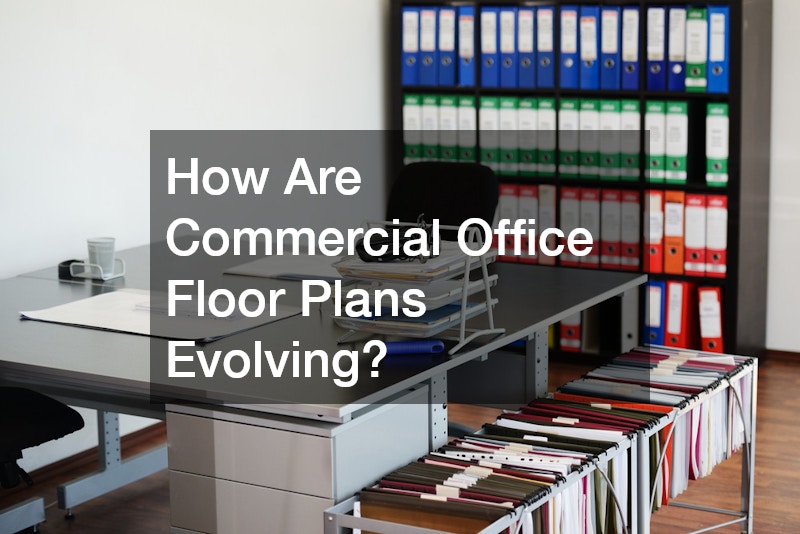
The modern office is no longer a static environment—it’s a living ecosystem that must adapt to changing business models, technologies, and workforce expectations. Historically, office layouts were designed for efficiency rather than engagement. Rows of desks and rigid departments defined the traditional workspace. However, evolving employee needs have led to the rise of more dynamic, inclusive, and multifunctional environments.
In 2025, commercial office floor plans emphasize flexibility, modularity, and scalability. Spaces are designed to evolve alongside organizations, allowing easy reconfiguration for different team sizes or projects. Movable walls, modular furniture, and adaptable meeting areas make it possible to repurpose sections of an office quickly and affordably.
A commercial restoration service can play a crucial role in these transitions by renovating outdated structures and modernizing them for today’s requirements. Restoring older buildings into efficient, tech-friendly offices preserves architectural character while integrating modern amenities.
The future of office layouts lies in balance—creating spaces that promote collaboration while respecting the need for focus and privacy. This balance defines the evolution of workplace design, enabling companies to remain agile and relevant in a fast-changing business landscape.
What Are the Key Features of Modern Commercial Office Floor Plans?
Modern commercial office floor plans are built around core principles of efficiency, comfort, and innovation. Designers are moving beyond aesthetics to focus on how people actually interact with their surroundings.
Key features include multipurpose zones, quiet pods, and open collaboration areas that cater to different work styles. Companies now understand that productivity thrives in variety. Employees need access to spaces for teamwork, solitude, and creativity. Incorporating biophilic design—natural light, greenery, and organic materials—helps reduce stress and improve focus.
A commercial roofing service often contributes to these improvements by ensuring structures can support skylights, rooftop gardens, and solar panels. These features not only improve aesthetics but also support sustainability goals.
Acoustic design is another essential factor. Modern offices use soundproof partitions, textured materials, and layout zoning to manage noise levels effectively. Technology integration—such as smart booking systems, climate control, and digital collaboration tools—also defines modern floor plans, helping businesses run more efficiently and intuitively.
How Are Businesses Accommodating Remote and Hybrid Work Models?
The global shift toward remote and hybrid work has permanently changed how businesses utilize their office spaces. Instead of every employee having a fixed desk, commercial office floor plans in 2025 prioritize shared, flexible environments that support diverse schedules and digital collaboration.
Hot-desking, hoteling, and collaborative work zones have replaced traditional seating arrangements. These adaptable layouts allow employees to choose where and how they work, depending on daily tasks or team interactions. Many organizations are also incorporating “touchdown” areas—compact workstations for short visits to the office.
A commercial moving company often plays an essential role in this transition by helping organizations downsize or reconfigure space efficiently. Moving and restructuring office assets allows businesses to adapt quickly without significant downtime.
Ultimately, hybrid-friendly layouts acknowledge that not all work requires in-person attendance. Instead, the office becomes a hub for collaboration, culture-building, and client engagement—a place people choose to visit for meaningful connection rather than obligation.
What Role Does Employee Well-Being Play in Office Floor Plan Design?
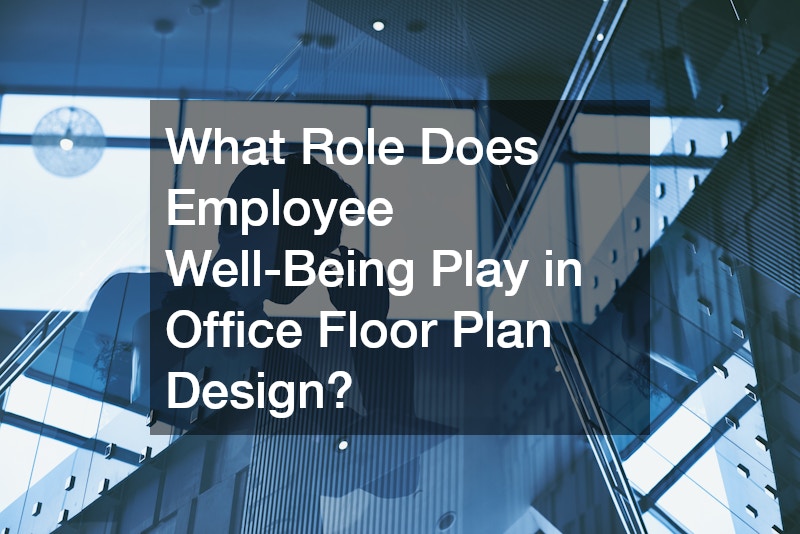
Employee well-being has become central to workplace design. As companies increasingly recognize the link between wellness and performance, commercial office floor plans are being reimagined to support both mental and physical health.
Modern designs incorporate ergonomic furniture, wellness rooms, and natural materials to foster comfort and balance. Access to daylight, proper ventilation, and quiet zones enhances concentration and reduces fatigue. Meanwhile, social spaces—such as lounges or cafés—promote informal interactions that strengthen company culture.
Security also contributes to a sense of well-being. Reliable entry systems and secure access points, managed by commercial locksmiths, ensure that employees feel safe throughout the workday. Safety measures integrated seamlessly into design allow for peace of mind without detracting from aesthetics.
As organizations move forward, the emphasis on holistic wellness will remain a defining feature of 2025’s office designs. The goal is to create environments where employees can thrive physically, mentally, and socially.
How Does the Open Office Concept Fit into 2025’s Trends?
The open office concept has been both praised and criticized over the years. Initially celebrated for encouraging collaboration, it later faced backlash for causing noise and distraction. In 2025, the open office is making a thoughtful comeback—redefined with better balance and functionality.
Rather than fully open layouts, commercial office floor plans now integrate “activity-based zoning.” This approach separates spaces based on purpose: quiet areas for focus, collaborative zones for teamwork, and semi-open lounges for informal meetings. The result is flexibility without chaos.
Modern designs use sound-absorbing materials, mobile partitions, and spatial dividers to mitigate noise while preserving visual openness. Furthermore, accessibility to amenities like clean restrooms and kitchen areas remains essential, supported by efficient commercial plumbing services that ensure reliable water systems.
The new open office isn’t about eliminating walls—it’s about designing adaptable, inclusive spaces that support productivity and comfort simultaneously. This evolution reflects the growing maturity of workspace design principles.
What Is the Importance of Collaborative Spaces in Office Design?
Collaboration has become the cornerstone of modern business success. In 2025, commercial office floor plans increasingly emphasize shared environments that foster teamwork, innovation, and communication.
These areas include conference rooms, brainstorming hubs, and casual lounges equipped with digital collaboration tools. Movable furniture allows for quick layout changes to accommodate various team needs. Visual connectivity between zones encourages cross-departmental engagement, breaking down silos that once limited creativity.
A commercial concrete paving contractor might seem far removed from design discussions, yet their work directly supports exterior collaboration spaces. Outdoor patios, courtyards, and walkways extend the office environment, offering employees flexible areas for meetings or relaxation.
Collaborative spaces must also accommodate virtual participants. Integrating audiovisual technology, high-speed connectivity, and adaptable seating ensures inclusivity for hybrid teams. In essence, these spaces create the heartbeat of a modern workplace—dynamic, inclusive, and forward-thinking.
How Are Tech Companies Influencing Office Floor Plans?
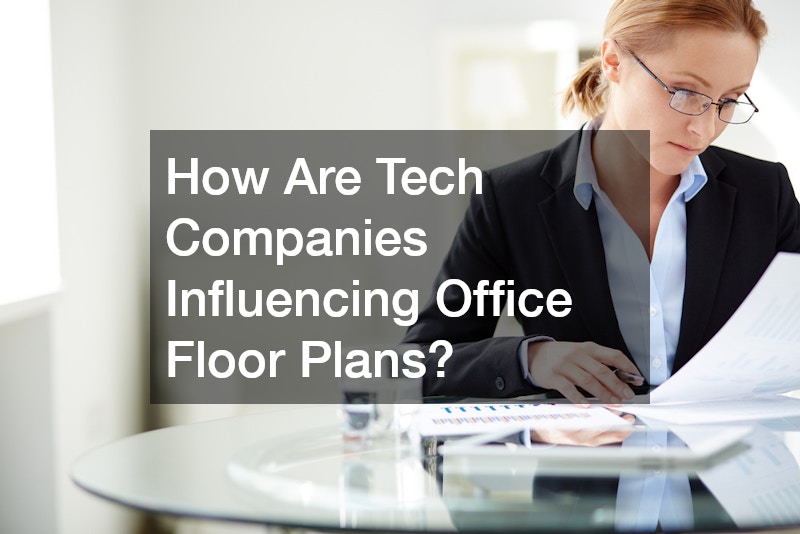
Tech companies have long been at the forefront of workspace innovation. Their approach to commercial office floor plans continues to inspire businesses across industries. Flexibility, sustainability, and technology integration define these environments, designed to attract and retain top talent.
These offices often feature open collaboration zones, creative lounges, and quiet pods that support diverse work styles. Digital tools such as occupancy sensors and app-based room booking optimize space utilization. Artificial intelligence even helps adjust lighting and temperature based on occupancy patterns.
One often-overlooked trend is the integration of energy-efficient materials that enhance comfort and privacy. For instance, commercial window tinting installers provide solutions that reduce glare, regulate indoor temperatures, and save energy. This not only improves comfort but also contributes to environmental responsibility.
As more companies emulate the design philosophies pioneered by the tech sector, smart, flexible, and human-centered office spaces will become the standard rather than the exception.
What Is the Future of Co-Working Spaces Within Commercial Offices?
Co-working spaces have grown from niche environments into mainstream workplace solutions. Even large corporations now incorporate co-working areas within their facilities to encourage collaboration and innovation.
In 2025, commercial office floor plans are expected to feature hybrid layouts that blend private offices with shared work zones. These designs support both internal teams and visiting professionals. The flexibility of co-working environments also appeals to freelancers, startups, and remote workers seeking a balance between independence and community.
A key part of this evolution involves high-quality finishes and durable materials. For instance, commercial countertops play an important role in shared kitchens, café areas, and meeting zones—balancing functionality and style while withstanding heavy daily use.
The future of co-working within corporate offices is about inclusion and adaptability. Businesses will continue designing flexible, multi-purpose spaces that blur the boundaries between traditional workplaces and community hubs.
How Can Office Floor Plans Enhance Productivity?
Productivity is one of the main driving forces behind modern office design. In 2025, commercial office floor plans are being crafted with strategic intent—balancing efficiency, collaboration, and comfort to maximize output. Every design decision, from desk placement to lighting temperature, is guided by data-driven insights into how people work best.
Spatial organization plays a crucial role. Designers are using data analytics and behavioral insights to optimize traffic flow, minimize disruptions, and allocate space based on usage patterns. Dedicated quiet zones enhance concentration, while open lounges stimulate creative thinking. The goal is to create a workspace where employees can easily transition between focus and collaboration without losing momentum. Strategic positioning of meeting rooms, break areas, and workstations ensures a natural flow that supports daily routines while reducing fatigue and unnecessary movement.
A commercial railing installation company might contribute to productivity indirectly by ensuring safety in multi-level offices or stairwells. Secure, aesthetically pleasing railings enhance both design and functionality, reflecting attention to detail that aligns with modern office expectations. When employees feel safe and comfortable in their surroundings, their ability to focus and perform increases significantly.
Technology further supports efficiency. Automated lighting, air quality sensors, and ergonomic furniture help create adaptive environments that adjust to individual needs. Smart systems can monitor occupancy and temperature levels, tailoring conditions for maximum comfort and energy efficiency.
What Role Does Sustainable Design Play in Future Office Layouts?
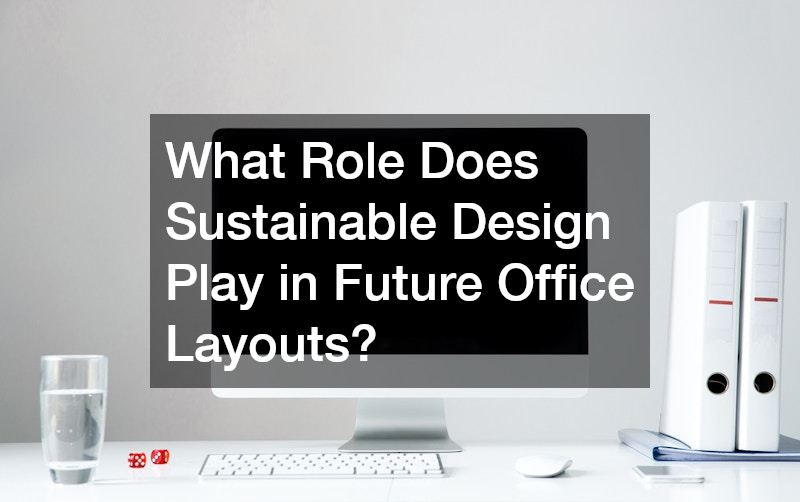
Sustainability is no longer optional—it’s an essential consideration in modern architecture. The focus on green building principles is reshaping commercial office floor plans, pushing companies to design spaces that are energy-efficient, resource-conscious, and environmentally responsible.
Natural light optimization, renewable materials, and efficient HVAC systems are key features. Many offices incorporate recycled furnishings and low-VOC finishes to improve indoor air quality. Smart systems monitor energy use and water consumption, allowing companies to meet both regulatory and ethical goals.
A commercial glass company often contributes to these sustainability efforts by providing high-performance glazing that maximizes daylight while minimizing heat gain. This approach reduces reliance on artificial lighting and improves employee comfort.
Sustainable design isn’t just about compliance—it’s about creating spaces that enhance long-term well-being and reduce environmental impact. As businesses look toward the future, eco-conscious commercial office floor plans will become central to their identity and operations.
The evolution of commercial office floor plans reflects the shifting priorities of modern businesses. From sustainability and technology to flexibility and employee well-being, the workplace of 2025 is designed to adapt and inspire.
Every element—from lighting and materials to layout and mobility—contributes to a unified vision of efficiency, comfort, and collaboration. Industry partners like commercial restoration service providers, commercial roofing service experts, and other specialists help bring these innovations to life, ensuring both functionality and aesthetic excellence.
Ultimately, the office of the future is not just a place to work—it’s a living, breathing environment that supports creativity, engagement, and sustainability. By embracing these design trends, businesses can create inspiring spaces that attract talent, enhance productivity, and reflect their commitment to innovation and well-being.
As 2025 unfolds, forward-thinking organizations will continue to lead the way, redefining what it means to design with purpose through intelligent, adaptive commercial office floor plans.
